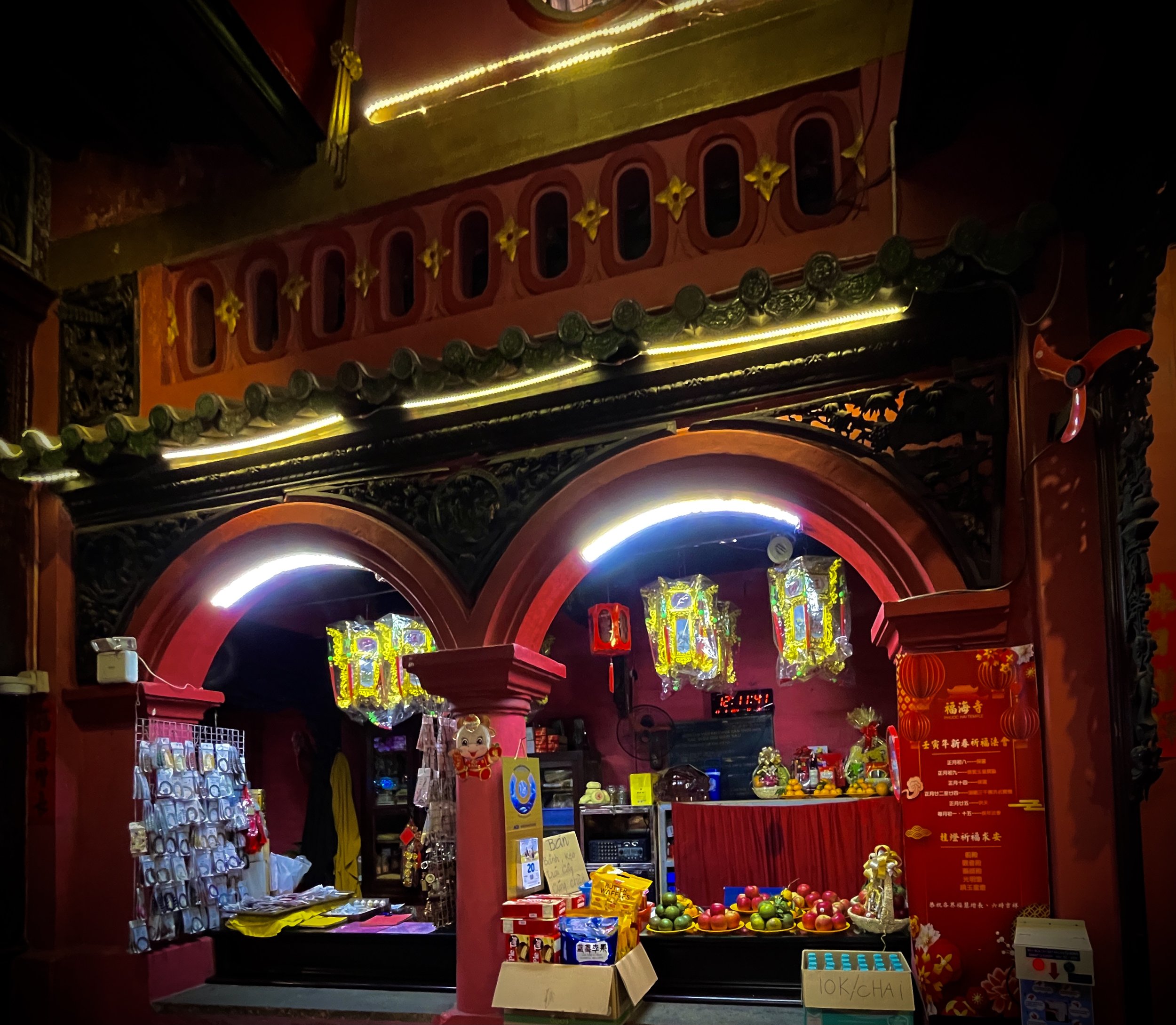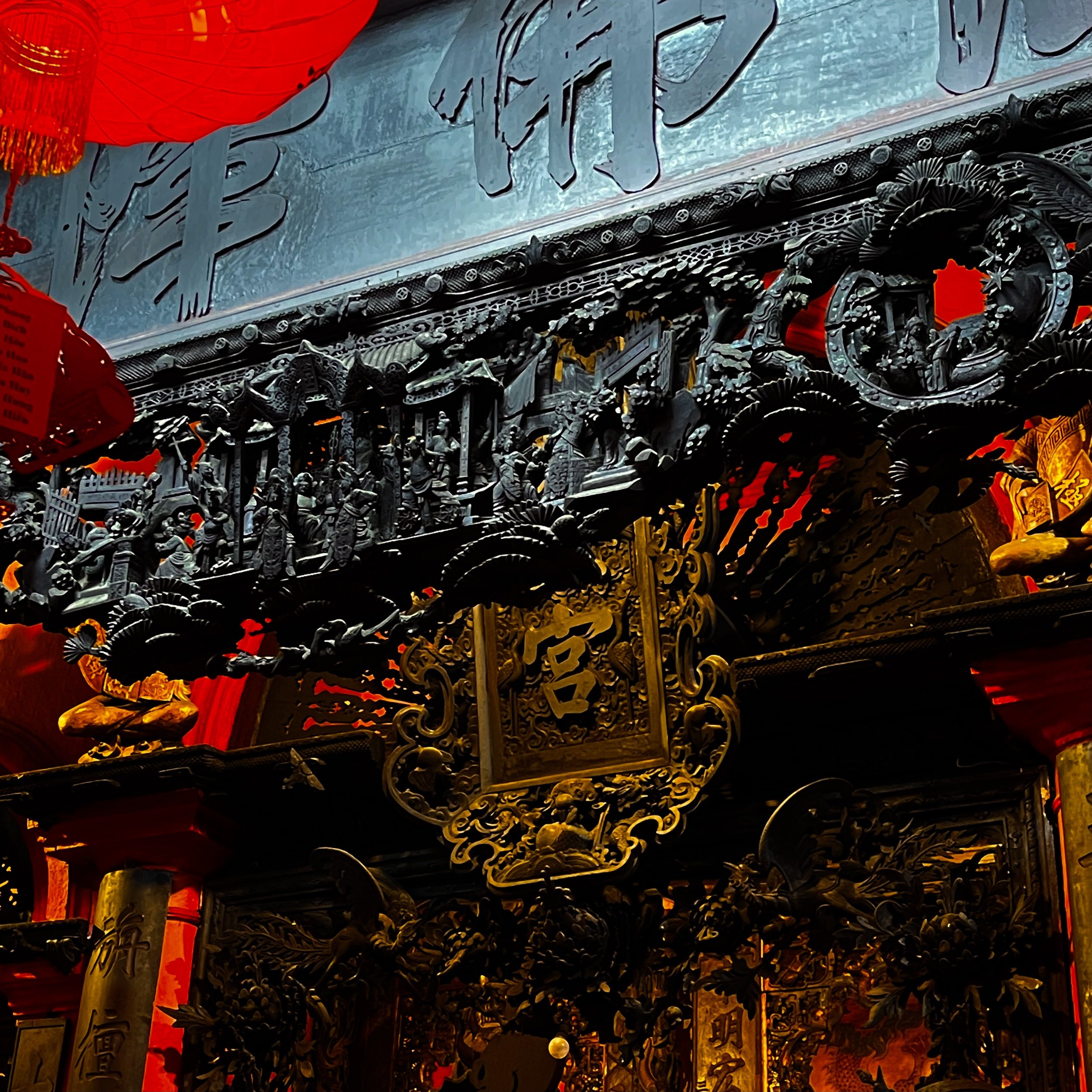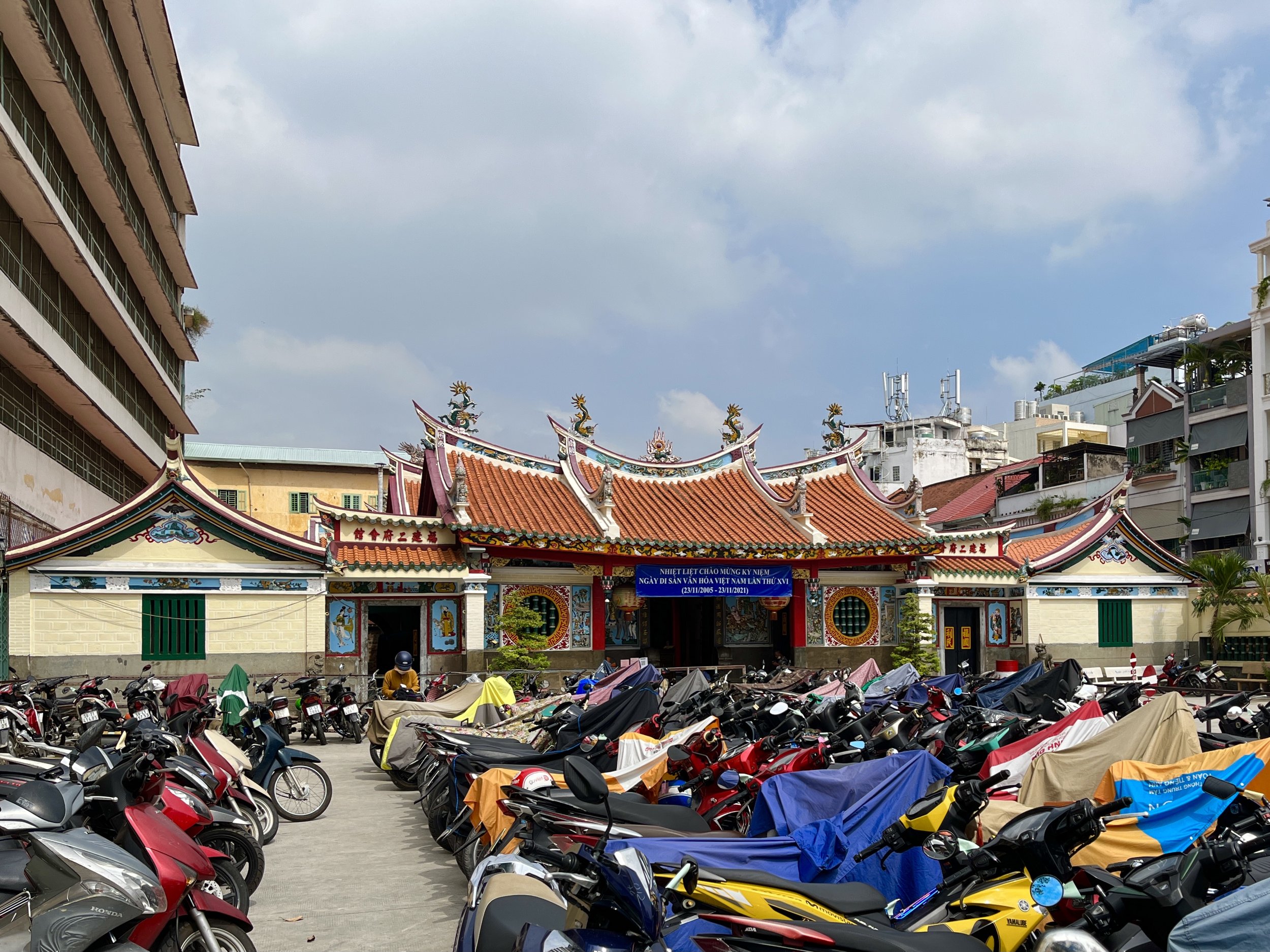Fifty years later, the Qing officially permitted the emigration of Chinese as per the first Treaty of Peking; additional tens of thousands moved to Cholon without giving up their Chinese nationality. Privileged over the native Vietnamese in the new French colonial system, these immigrants were typically single men who married local women, building the existing Sino-Vietnamese merchant class into an economic elite that dominated the finances of the South until reunification in 1975.
That’s one of the reasons the names for these places can be so confusing; they not only have a Chinese name and Vietnamese name, but are interchangeably called a guildhall, temple, assembly hall, pavillion, or pagoda. In China, these would be separate institutions within a community; in Cholon, the assembly halls are one stop shops, with most not more than a five minute walk from the next.
4. Ong Bon Pagoda - Nhi Phu Temple, 1765
(also known as Er Fu temple, Chauzhou Guild Hall and Sheng Mu temple)
Ni Phu (two cities) assembly hall was built by Hokkien immigrants from Xuanzhou and Zhangzhou. This is the only temple in Cholon where Ong Ban, the god of the soil, is worshipped. The best days to visit are the last day of the lunar year, and the second day of the new lunar year. On these days, traditional Nanyin music is performed on vintage instruments.
Next door is a high school built in the French colonial era that still teaches Chinese language classes; various Chinese dialects and standard Mandarin are still commonly spoken in Cholon, and the Chinese minority population here is still considered somewhat privileged and unassimilated. That said, the Hokkien worshippers at this pagoda are minorities even among the ethnic Chinese of Cholon, most of whom are Cantonese or Teochew.






































































































